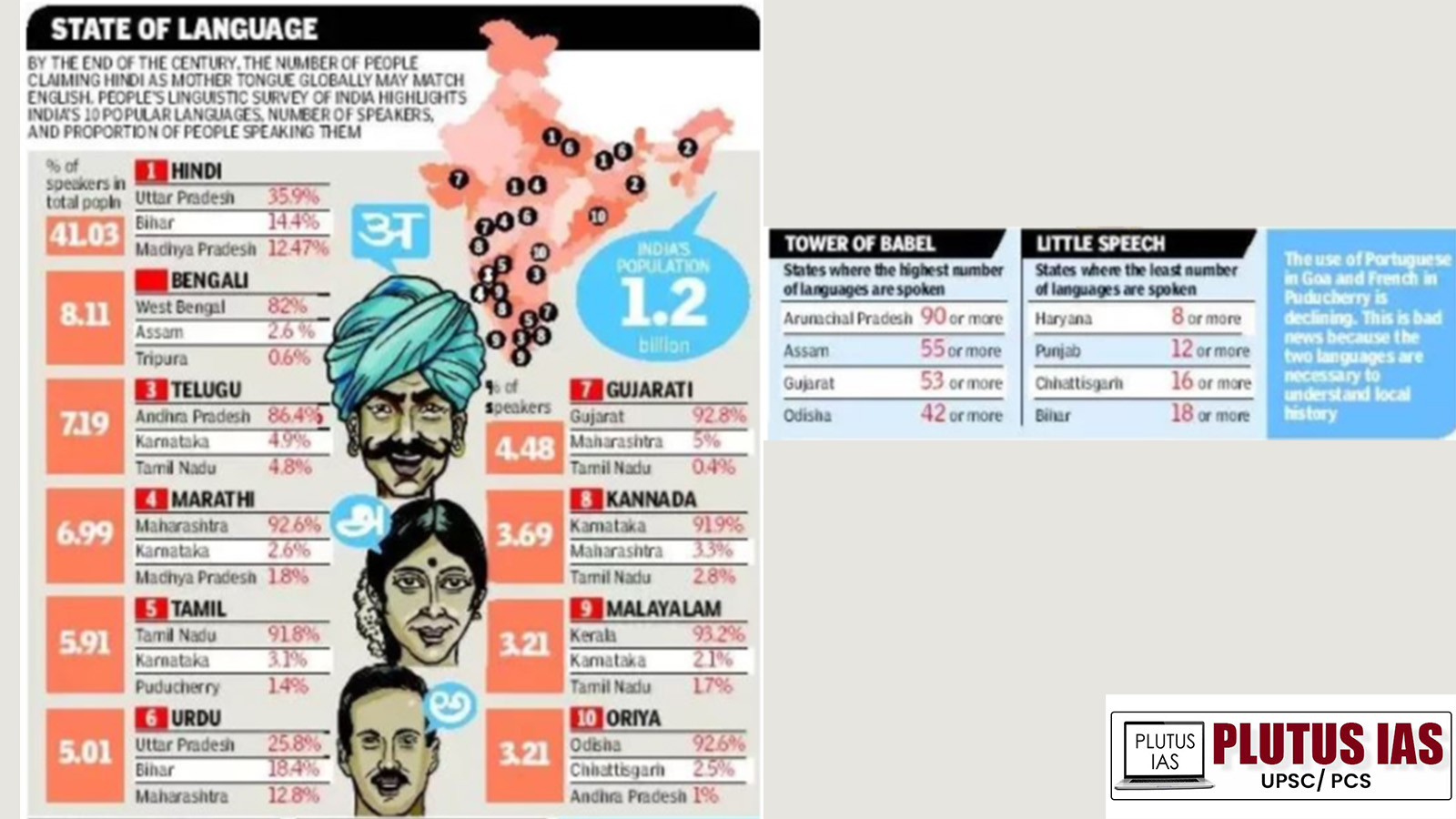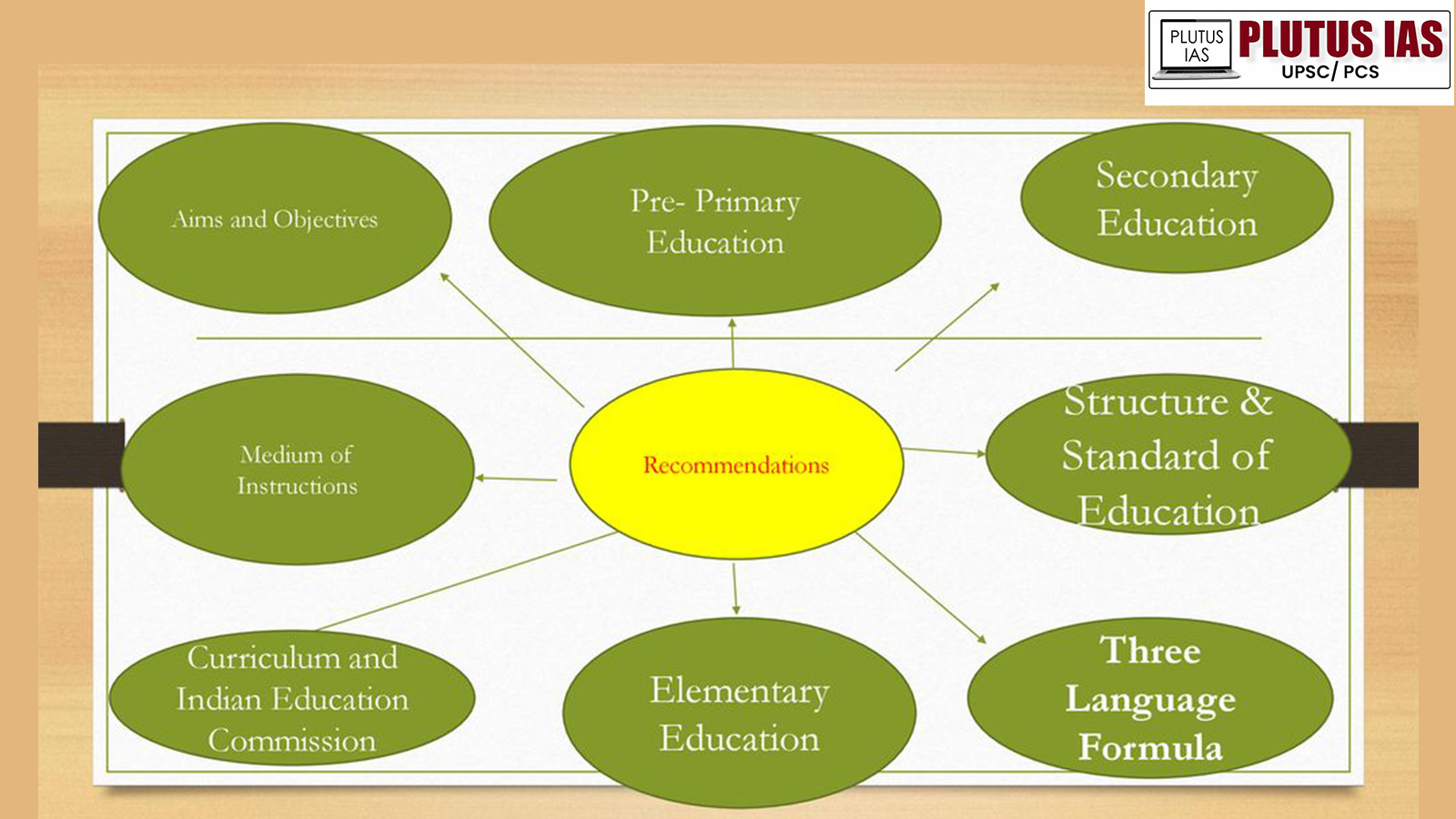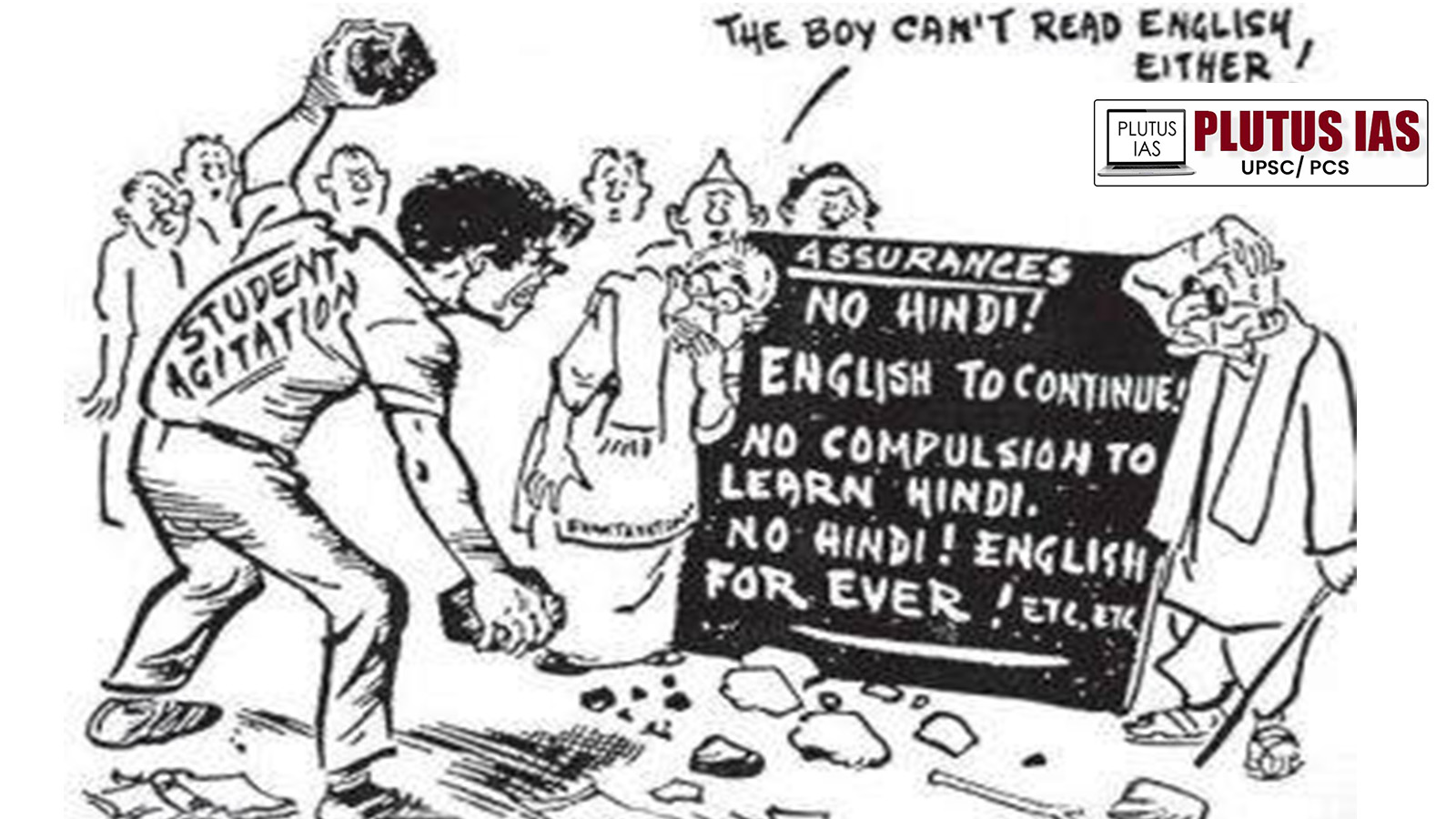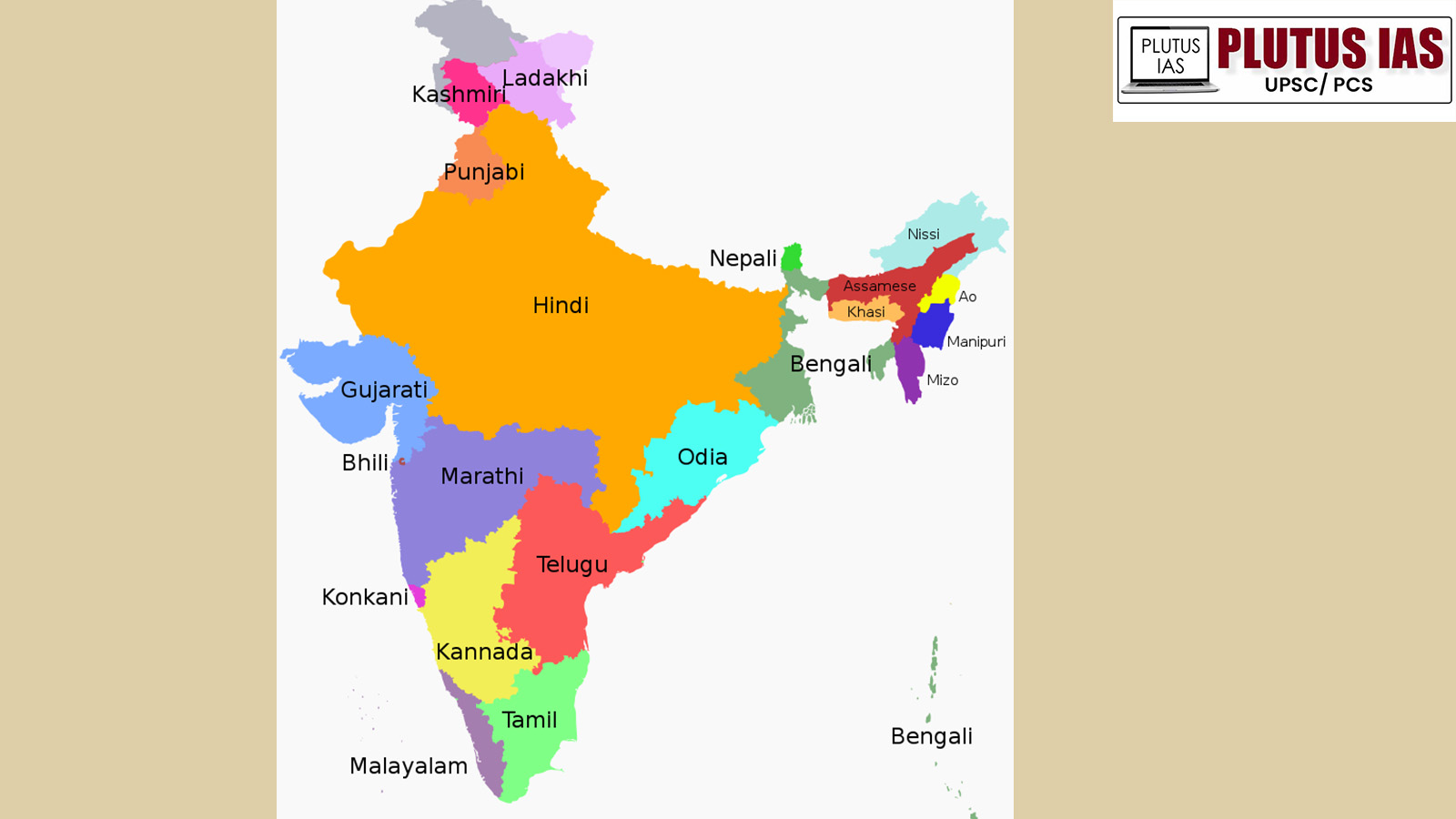19 Mar Three – Language formula in the context of Endangered Languages
Source – The Hindu and PIB.
General Studies – Indian Politics and Governance System, Mother Tongue, Eighth Schedule of the Constitution, Official Language, Official Language, Kothari Commission and Three-Language Formula, Official Language Resolution 1968 and Three – Languages Formula, National Education Policy 2020.
Why in the News ?

- Recently, the Home Minister of India, Amit Shah, while underlining the importance of mother tongue in the Parliament, stressed on the importance of imparting education to children in their mother tongue at the school level in India and called for the National Education Policy 2020 to be adopted by all the states of the country. Said.
- Recently, the whole world has celebrated every year on 21st February with the aim of promoting linguistic and cultural diversity in the world and to bring awareness towards the mother tongue Is celebrated as ‘International Mother Language Day.
- Some states of India, especially states like Tamil Nadu, Puducherry and Tripura, have opposed the implementation of the three-language formula contained in the National Education Policy 2020 and have talked about forceful imposition of Hindi.
- According to the recently released UNESCO Atlas of Endangered Languages in many countries of the world, currently 577 languages are listed as critically endangered.
Introduction to the Three Language Formula :

After independence in India, the three language formula was first mentioned by the National Education Commission (Kothari Commission) in the policy of the year 1968. Which are as follows –
(1) First language- The first language to be studied is the mother tongue or regional language.
(2) Second language – Hindi speaking state – Any other modern Indian language or English
Non-Hindi speaking states – Hindi or English
(3) Third language – Hindi speaking state – Third language is English or any modern Indian language (which is not taken as second language).
Non-Hindi speaking states – Third language: English or any modern Indian language (not taken as second language)
Kothari Commission and Three – Languages Formula (1964-1966) :

- The National Education Commission itself is known as Kothari Commission.
- It was presided over by Daulat Singh Kothari, who was the then Chairman of the University Grants Commission of India and also the Chairman of the National Education Commission, hence it is also known as Kothari Commission.
- It was an apex commission set up by the Government of India to examine and advise on all aspects of the educational sector in India.
- Kothari Commission itself had recommended that in Hindi speaking areas, in addition to Hindi and English, there should be provision for study of a modern Indian language or one of the languages of South India and in non-Hindi speaking states, there should be provision for study of Hindi along with state languages and English. Arrangements should be made. This system is known as the three-language formula.
Official Language Resolution 1968 and Three Language Formula :
- To implement the recommendations of the Kothari Commission, a resolution was passed by the Parliament of India which was ‘known as ‘ Official Language Resolution 1968 ‘
- According to the Official Language Resolution 1968 – To maintain the spirit of unity and integrity of India and to facilitate communication among the people in different parts of the country, it is necessary to implement the three-language formula prepared by the Central Government of India in consultation with the State Governments. Will be fully implemented in all states.
- Therefore, in this resolution, it was passed that in addition to Hindi and English, in Hindi speaking areas, there should be a provision for study of a modern Indian language or one of the languages of South India and in non-Hindi speaking states, there should be a provision for study of Hindi along with state languages and English. Arrangements should be made.
New Education Policy, 2020 and three – Language formula :

- For the new National Education Policy 2020, a committee was constituted by the Central Government under the chairmanship of Dr. Kasturirangan, President of the Indian Academy of Sciences Bangalore and General Secretary of the Indian Science Congress and a renowned scientist of India. Since the three language formula could not be fully implemented in practice, it was also mentioned in the new National Education Policy 2020 that the above mentioned three language formula will be implemented. Many states have objected to this and have also raised objections.
According to the National Education Policy –
- Education in mother tongue or local or regional language – It states that the medium of instruction up to grade 5 will be the home or local or regional language or at least the mother tongue which may be extended to grade 8 or beyond.
- Study of 2 Indian languages – The student will have to study 2 Indian languages out of the three.
- While implementing the three-language formula, the aspirations of the state, the general public and the people will be kept in mind. No language will be imposed on any state.
- States, any region of India and even students are free to choose three languages.
- Students studying in class 6 or 7 can change one or more of those three languages.
- This will promote multilingualism and national unity.
- There is no specific language that can be imposed on any state. It is for the State to decide whether – “ What is their preferred language? ”
Implementation of three – Language formula in the New National Education Policy 2020 :

- Under the new National Education Policy 2020, a broad base has been provided for implementing the three language formula for imparting education at the school level in India. Following are the main points of this policy:
Emphasis on Elementary Education :
- This policy emphasizes the importance of early childhood education in helping children learn languages. It suggests that children between the age of 3 to 8 years should study in their native language or regional language.
Resilience :
- This new policy allows a wide range of options for language learning. The third language can be English or any other language of the student’s choice, while the first two languages must be native Indian languages of their state or region. In non-Hindi speaking states, where there are concerns about the imposition of Hindi, this provision is unlikely to create opposition to this formula.
Teachers training :
- Under the policy, emphasis has been laid on the need for trained teachers to successfully implement the three language formula. It suggested that teachers should be given training in multilingualism and efforts should be made to find teachers fluent in local languages.
Changes in the examination system and overall evaluation method of students :
- This as per the policy, students should be assessed on the basis of their command over all the three languages including English.
Availability of online textbooks and other learning materials :
- To enable students to learn in their mother tongues, the policy encourages the creation of online resources and learning materials in native Indian languages.
Present need of trilingual formula in India :

- According to the report of this committee, language learning is an important part of a child’s cognitive development. Therefore, its primary objective at the school level in India is to promote multilingualism and national harmony across the country.
Problems arising in the implementation of the three – Language formula in India :
- States like Tamil Nadu, Puducherry and Tripura are not ready to teach Hindi in their schools. Nor has any Hindi-speaking state included any South Indian language in its school curriculum.
- State governments in India often do not have sufficient resources available to implement the three-tier linguistic formula. Inadequacy of resources is also a significant hindering aspect in implementing the three-language formula at the school level in India.
Constitutional provisions related to language in the Indian Constitution :

- Language and culture have a deep and complementary relationship because language and culture are not contradictory to each other but both are linked to the mutual identity of the people.
- The Eighth Schedule of the Indian Constitution deals with the provisions on the language of India.
- There are 22 official languages listed in the Eighth Schedule of the Indian Constitution.
- Education in India is a state subject. Therefore, the states of India have the right to make policy for education at the school level.
- Article 29 of the Indian Constitution states that – No person shall be discriminated against on grounds of religion, race, caste, language or any of them in India.
- This article states that – “Any section of citizens “having their own distinct language, script or culture shall have the right to preserve it.”
- Article 343 : This article of the Indian Constitution Belongs to the official language of the Union of India. According to this article, Hindi should be in Devanagari script and the international form of Indian numerals should be followed in terms of numbers. This article also states that English will continue to be used as the official language for the first 15 years after the adoption of the Constitution.
- Article 346 : This article provides for the official language for communication between the States in India and between the Union and the State. According to the article, for the said work “Authorized” Language will be used. However if two or more states agree that the language of communication between them will be Hindi, then Hindi can be used as the official language.
- Article 347 : Special provisions with respect to the language spoken by any part of the population of a State. This article empowers the President to select a language as the official language of a State and, if a substantial section of the population of a State desires that the language spoken by it be recognized by the State, he may direct Such language may also be given official recognition throughout that State or in any part thereof for such purpose as it may specify.
- Article 350 (A) : There is a provision under this article that Provides facilities for education in mother tongue at primary level.
- Article 350 (B) : This article provides for the appointment of a special officer for linguistic minorities in India. The special officer to be appointed for linguistic minorities will be appointed by the President. It will investigate all matters relating to the protection of linguistic minorities and submit its report directly to the President of India. The President of India can present that report before each House of the Parliament or send it to the respective State/State Governments.
- Article 351 : Under this article of the Indian Constitution Provides power to the Central Government to issue directions for the development of Hindi language.
Most endangered languages in the world :

- Before any language or dialect becomes extinct, it goes through several stages. The first of these stages is potentially endangered, which occurs when a foreign language becomes the dominant language of business and education while the potentially endangered language continues to be spoken by both adults and children at home. As the dominant language makes the potentially threatened language less and less useful, the language moves into endangered status.
In terms of language, before any language becomes extinct, it goes through the following stages:
- critically endangered language,
- Dying language,
- Extinct language.
- According to the UNESCO Atlas of the World’s Endangered Languages, there are currently 577 languages listed as critically endangered. This classification means that there are only a few people in the oldest living generation who can speak or understand that language and many of these people are not even fully fluent in that language.
- About 537 of the world’s languages are considered critically endangered, meaning they are used only by the oldest surviving generation.
- Of these 577 critically endangered languages, many have only one speaker left and many have become extinct many years ago.
- Some of the most criticized languages include Yamana (spoken in Chile), Taje (spoken in Indonesia), Pemono (spoken in Venezuela), Laua (spoken in Papua New Guinea), Kulon- Pazeh (spoken in Taiwan), Caixana (spoken in Brazil), Dai Hoi (spoken in Brazil), Dumpelas (spoken in Indonesia), Bikya (spoken in Cameroon), and Apiaka (spoken in Brazil spoken). The sole remaining speaker of these languages has not, in many cases, been heard from for many years.
- In fact, some linguists believe that most of these languages have become extinct many years ago, with the exception of Kulon-Pazeh, which is still spoken as a second language by a small population.
Conclusion / Path to solution :

- If the three language formula of the new National Education Policy 2020 is fully implemented in the education system of India, Hindi and other Indian languages will get an opportunity to prosper and multilingualism and cultural harmony will increase in India.
- In the context of the extinction of the language, the unity and integrity of the country can be ensured by the three-language formula and along with Hindi, other Indian languages will also develop as a language of communication among the people in different parts of the country.
- In the three-language formula, provision has also been made for the study of English language in Hindi speaking and non-Hindi speaking states. We all know that today the English language dominates all branches of knowledge and science in higher education and it is still lacking in Hindi and other Indian languages.
- Therefore, through the three-language formula, the subjects of all branches of knowledge in higher education can be translated into Indian languages and education can be provided to the students in their mother tongue or in the regional languages related to that state or even in Hindi language. The biggest example of which is the use of Hindi language as the language of medical studies in Madhya Pradesh.
- In the era of globalization, Hindi language or other Indian languages should also include words related to law or science and technology as core words so that the language can become more prosperous.
- If any language is spoken in the folklife or is used by the local people, then that language or dialect will always survive, otherwise the existence of that language may be in danger or may become extinct because Kabir, a thinker of folk sensibility, It is also said that – “Well water is cultured, well water is flowing.” Therefore, instead of getting involved in opposition to the linguistic power, we should accept the words of the folk language as it is and include them in the Indian language so that it can become more rich and useful to the people and its existence can also be preserved.
Download plutus ias current affairs eng med 19th March 2024
Practice Questions for Preliminary Exam :
Q.1. Consider the following statements regarding language.
- The Eighth Schedule of the Indian Constitution deals with language, in which a total of 24 official languages are mentioned.
- Article 351 of the Indian Constitution empowers the Central Government to issue directions for the development of Hindi language.
- Inadequacy of teaching resources in India is also an important hindering aspect in implementing the three-language formula at the school level.
- There is no relation between language and culture because language and culture are contradictory to each other.
Which of the above statement / statements is/are correct?
(A) Only 1 and 3
(B) Only 2 and 4
(C) Only 1 and 4.
(D) Only 2 and 3
Answer – (D)
Practice Questions for Main Exam :
Q.1. What do you understand about the three – Language formula? Discuss logically how the three-language formula under the provisions of the National Education Policy 2020 strengthens India’s democracy by tying together India’s unity, integrity and cultural identities ?




No Comments